Why Causal AI?
Causal AI is the only technology that can reason and make choices like humans do. It utilizes causality to go beyond narrow machine learning predictions and can be directly integrated into human decision-making. It is the only AI system organizations can trust with their biggest challenges – a revolution in enterprise AI.
“To build truly intelligent machines, teach them cause & effect”
-Judea Pearl
Move beyond
predictions
Machine learning approaches have always focused on predicting. Causal AI can also predict, but more importantly it can take you a step further, allowing you to answer questions that you cannot with traditional machine learning models. This leads to a clearer connection to ROI.
Structural causal models allow you to estimate treatments and simulate counterfactuals, such as “What is the causal effect of intervening on a certain input variable?” or “What would be the most cost-effective way to change an outcome?”. This unlocks a whole new class of problems for data scientists to tackle. We call this decision intelligence.
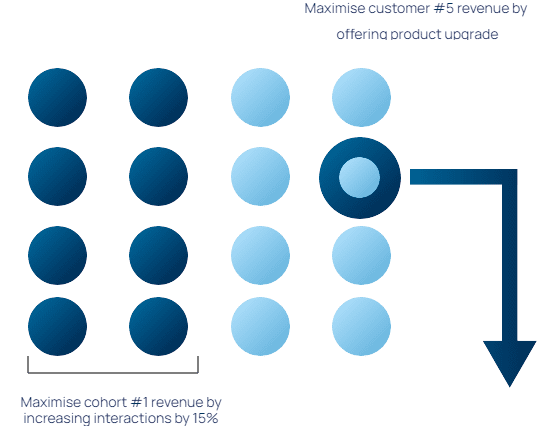
engine.perform_individual_recourse(
data=data,
desired_outcome={‘Renew’:[True]},
constraints=constraints
)
Explain your
model’s decisions
Methods like LIME or SHAP provide limited explainability as they can only be used with already trained models. This poses two main problems:
- They cannot guarantee the model will always act sensibly as they are trying to explain based on observed inputs. Imagine you have a datapoint that is drastically different from those observed in the past, there is no guarantee that the output of the model will make sense. SHAP and Lime are only explaining the past and not trying to anticipate what the model may do in the future.
- They tell us what features are associated with the prediction but not necessarily what features drive the outcome. The SHAP documentation touches on this issue in more detail.
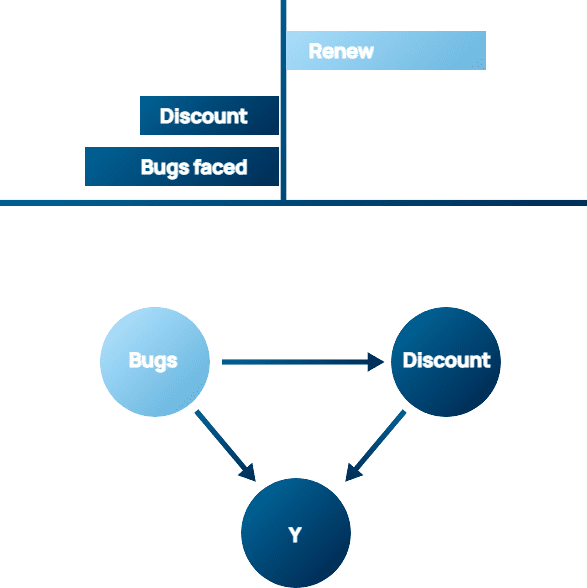
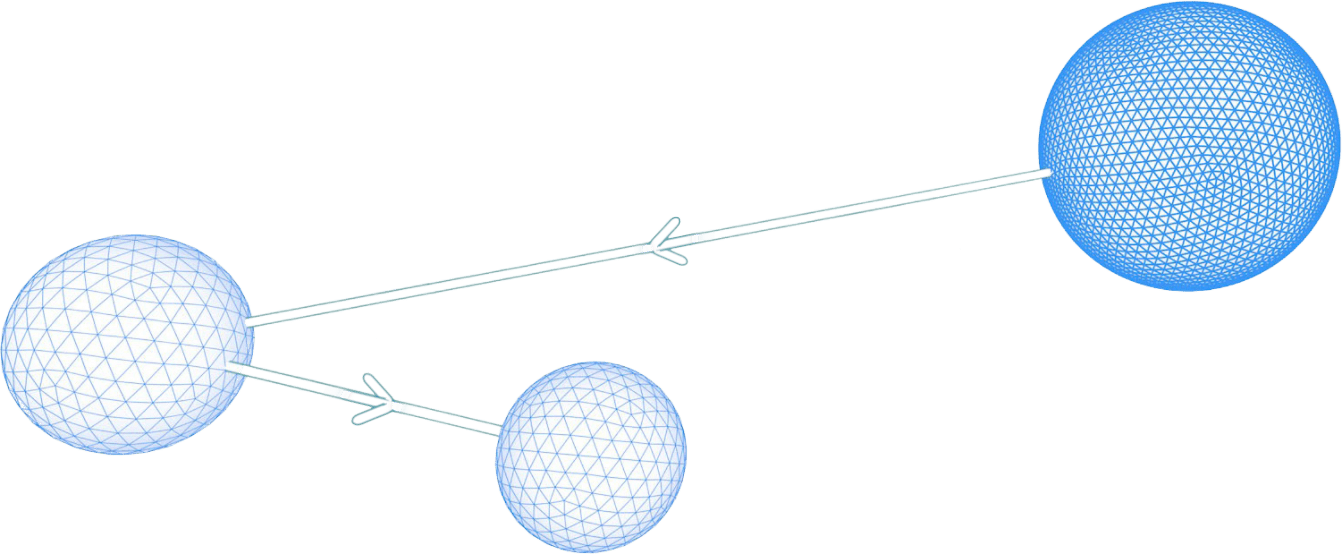
Embed domain knowledge
Causal methods allow domain experts to incorporate their unique knowledge in the modeling process. Experts can constrain specific relationships to their functional form ensuring the model always respects these and is generalizable. Causal models therefore merge the best of domain expertise and data driven approaches.
For example, think of a causal model of a manufacturing line. The process engineer may know that Temperature in sensor 1 has a linear positive relationship with pressure in chamber X. Leveraging decisionOS’ Human-Guided Causal Discovery they are able to embed this knowledge into the model and ensure the model always respects this relationship.
Learn more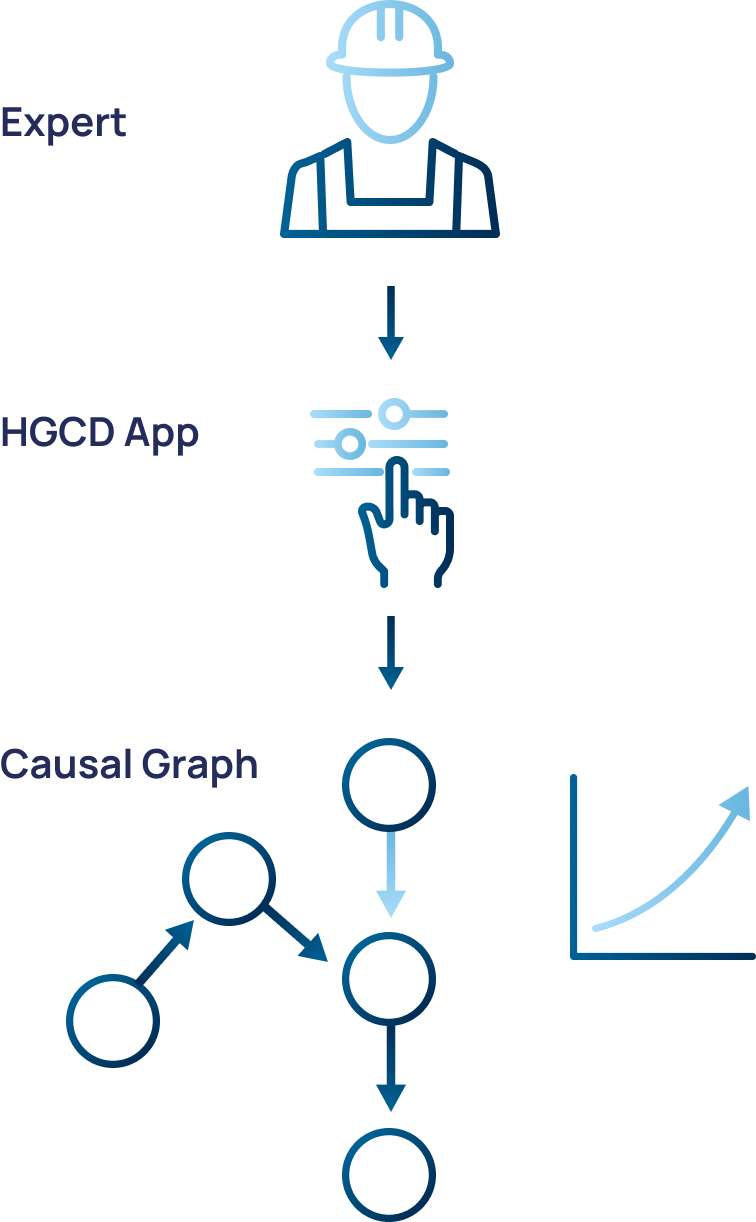
The Causal AI Revolution is Underway
The world’s largest technology companies are heavily invested in it, having created their very own causal research labs, and seeing great returns from their research.
Read more on our Causal AI Revolution blog
Image:
The number of papers presented at NeurIPS, the leading AI conference, on Causal AI has ballooned in recent years.
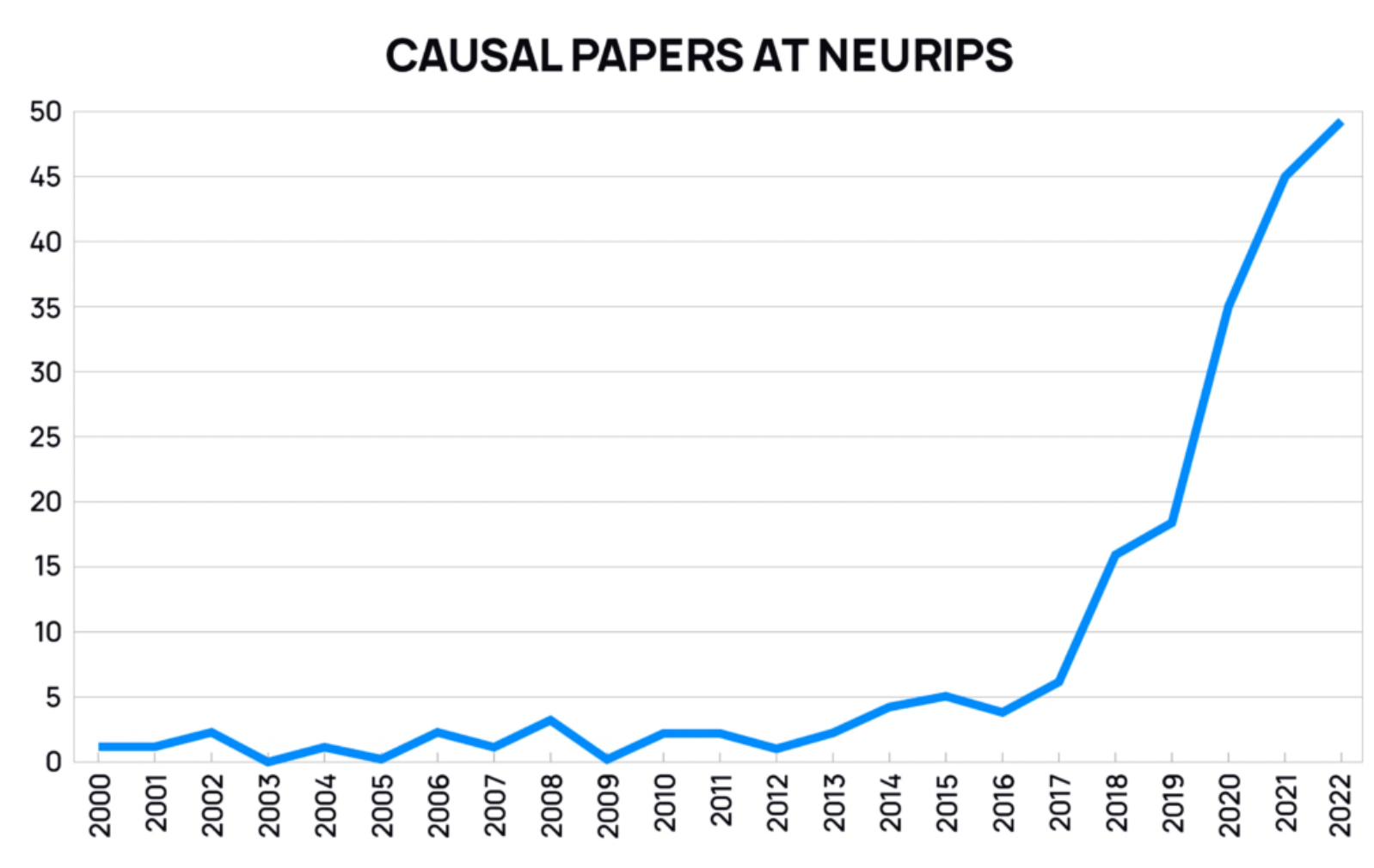
What do we mean by Causal AI?
The Causal AI ecosystem in decisionOS contains a rich set of tools, broadly divided in 3 categories:
1. Causal Discovery
Causal discovery is the process of combining algorithms and domain expertise to discover a causal graph from observational data. Causal graphs attempt to model the underlying data generating process rather than simple associations between variables.
decisionOS contains a full suite of the best-in class Causal Discovery algorithms that allow you to estimate these causal graphs in a wide variety of settings.
Learn more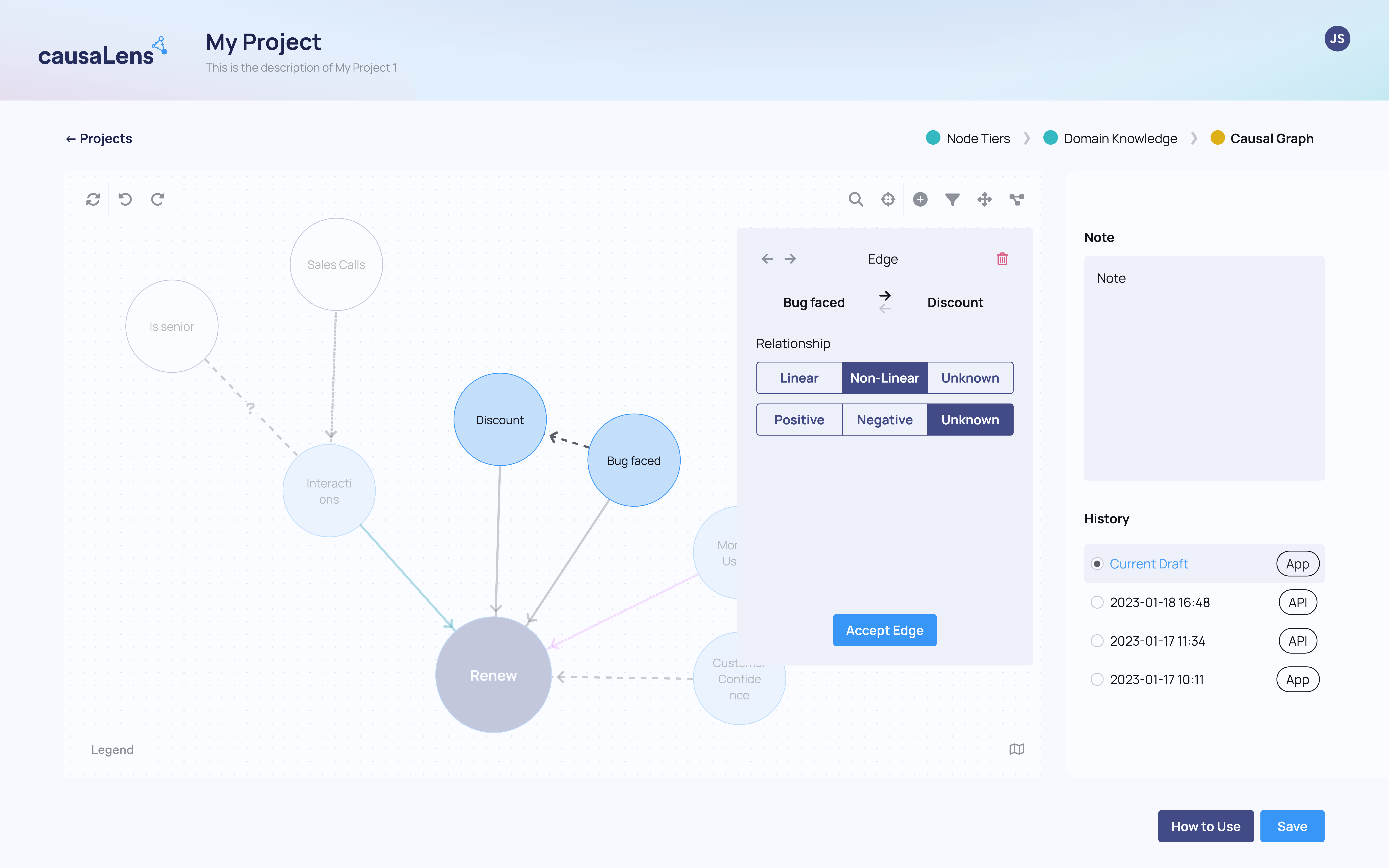
CausalWorkflow.discover_causal_graph(data, config)
2. Causal Model Discovery
Once causal relationships have been inferred you must train a structural causal model. In a structural causal model the relationships between variables represent causal effects, i.e. it is a representation of the underlying mechanism by which the system operates.
Learn more
from causalnet import CausalNet cnet = CausalNet() cnet.train(...) cnet.interventions.do(...)
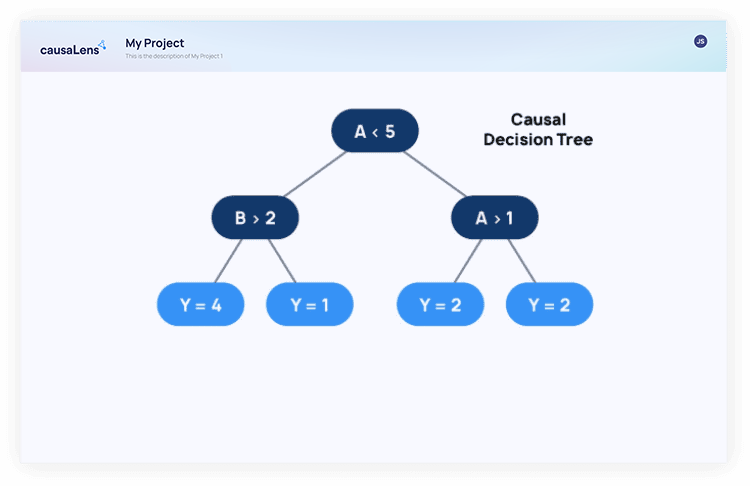
from cldt import CLDTRegressor cldt_regressor = CLDTRegressor(...) cldt_regrressor.fit(...)
3. Decision Intelligence
A structural causal model allows us to go beyond pure predictions and estimate the effect of treatments and counterfactuals. Using these estimations allows us to unlock a new class of decision intelligence.
Algorithmic recourseProvide optimal interventions for a given objective.
Causal effect estimationQuantify how interventions impact different groups within your data.
Causal fairnessDetermine how discrimination can occur within your data as you perform interventions and actions.
Root Cause AnalysisAnswer new causal questions through the use of interventions and counterfactuals.

Related Resources
Enterprise decision making needs more than LLMs
Following the hype around large language models (LLMs), tools and applications, the question remains, how many enterprise problems today can…
Discovering Causal Drivers at Scale
We discuss the challenges of scaling causal discovery for high-dimensional datasets in order to enable effective decision making in complex…
How Can AI Discover Cause and Effect?
Causal AI autonomously finds causes, using “causal discovery algorithms”, while boosting experimentation and human intuition.
Ways to get started
Request a Free Trial
Discover the power of Causal AI by requesting a free trial of decisionOS.
Get startedTalk to an AI Expert
Talk to our team, book a personalized demo and see AI decision-making in action.
Get startedResources
Read our white papers, case studies, and research to gain new understanding in the world of causality.
Get started









